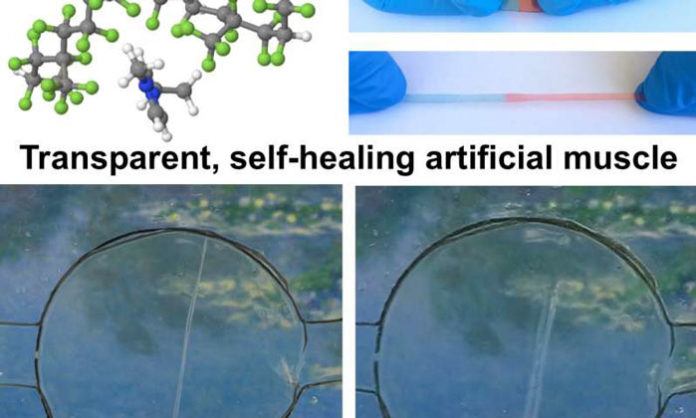Scientists from the University of California, Riverside have developed a transparent, self-healing, highly stretchable conductive material inspired by Wolverine. The material can be electrically activated to power artificial muscles. This is for the first time, scientists have created an ionic conductor, meaning materials that ions can flow through. According to scientists, this material has the potential so that it could improve batteries, electronic devices, and robot.
Professor Chao Wang said, “Creating a material with all these properties has been a puzzle for years. We did that and now are just beginning to explore the applications for this ionic conductor.”
Wong actually has a lifelong love for Wolverine. Wolverine is the comic book character who has the ability to self-heal. Ionic conductors have various key features including energy storage, solar energy conversion, sensors, and electronic devices.
Professor Christoph Keplinger demonstrates, “Ionic conductors could be used to power artificial muscles and to create transparent loudspeakers. Both devices feature several key properties of ionic conductors. For example, transparency, high stretchability, and ionic conductivity. But, both devices do not have the capability so that they can heal themselves from mechanical damage.”
The key difficulty is the identification of bonds that are stable and reversible under electrochemical conditions. Wang solved this problem by using ion-dipole interactions mechanism. The mechanism forces between charged ions and polar molecules. Both are highly stable under electrochemical conditions. So, Wang combined a polar, stretchable polymer with a mobile, high-ionic-strength salt to create the material.
The ionic conductor has cheap cost and easy to create process. It can stretch 50 times to its original length. The top and bottom layer of it is able to conduct electricity and self-healable. Its middle layer is transparent and non-conductive like rubber membrane.
According to 2 graduate students Timothy Morrissey and Eric Acome, that the material could be used to power a so-called artificial muscle. In another word, for dielectric elastomer actuator. The dielectric elastomer actuator consists of three individual pieces of polymer that are stuck together.
